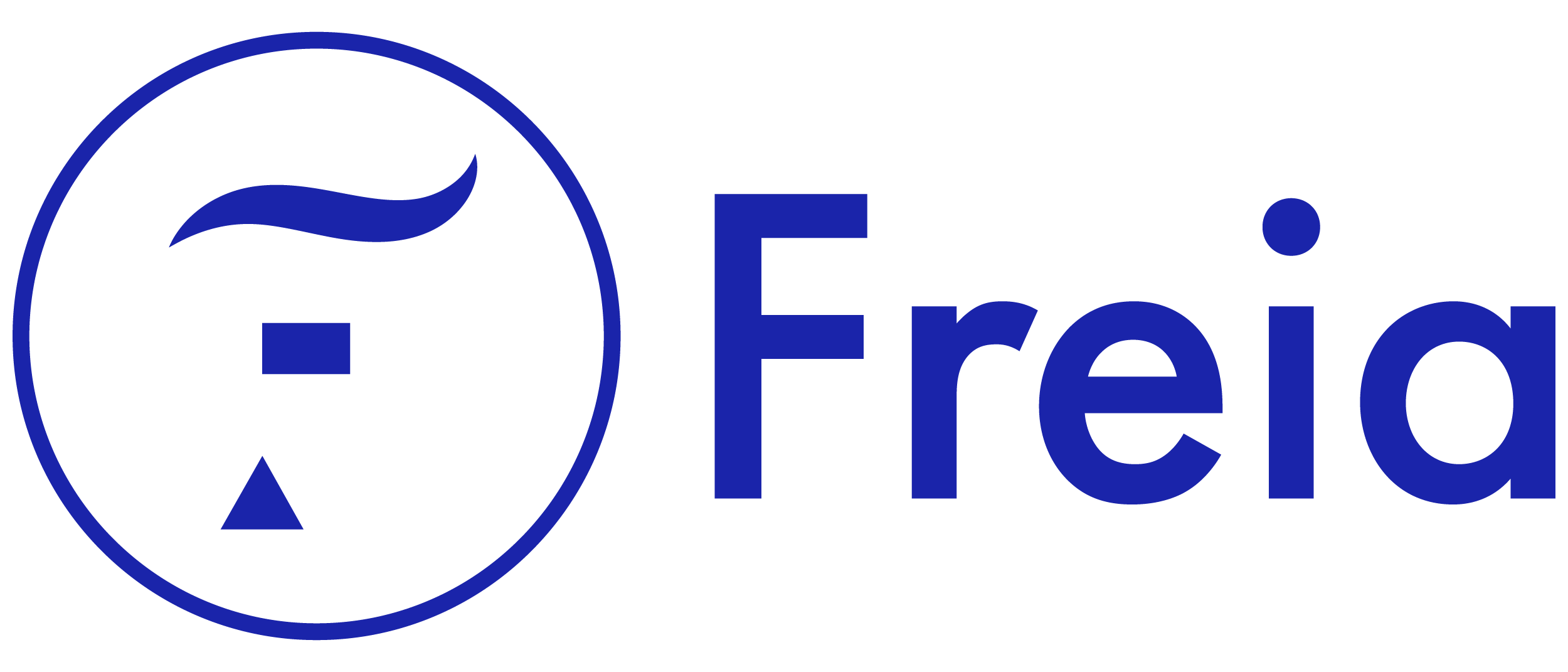Competition for employees who are skilled and able to work is intensifying. Ability to work part-time as well as multiculturalism are increasing amongst workforce. The young are struggling with more an more challenges in life. The additional costs caused by sickness absences and disability erode the profitability of organizations.
This article lists five solution-oriented trends that every organization should take into account in their HR strategy. These perspectives help to dilute the effects of work ability challenges, which are already visible in the everyday lives of CEOs, CFOs, HR Directors, supervisors, and employees.
1. From work ability management to career management
Work ability management refers to all the actions by which an organization, stakeholders, management, and employees aim to ensure the personnel’s work ability in relation to the demands of the job, to prevent disability risks, and to utilize the remaining work ability of individuals. Work ability of an employee is affected not only by motivation, but also by factors that support the employee’s resources, by the challenges and demands of their work, and by the functional capacity of the employee.
Work ability management is part of an organization’s overall management. We cannot separate “work ability management” from “operational management”.
Career management is a broader concept than work ability management. The starting point for career management is to support employees’ career management, self-direction, and intrinsic motivation related to their own work throughout their entire career. Career management focuses more on how people recognize their own strengths and career goals and become aware of the opportunities and limitations of working life. The idea is to learn how to utilize sources of information and support when needed, and how to set suitable goals and persist in pursuing them.
The transition from work ability management to career management has already begun. Shortage of labour, sustainability gap, and a societal need to keep every person of working age able to work, will guide our operations more strongly in the future.
It is in everyone’s interest to ensure the continuity of the careers of the working-age population. It is social wisdom to understand that an employee is only momentarily under the responsibility of a single organization. Transferring to another employer must also be secured. For this reason, the challenges faced by every working-age person should be identified early enough. The employer should tackle these challenges firmly and look for solutions that help to keep the employee in working life instead of joining the ranks of those receiving a disability pension prematurely.
In terms of labour market reform, private companies will be the only ones able to create more jobs and to increase their need for workforce. Neither the third sector nor the public sector can further inflate their own workforce. For this reason, the effects of trends should be taken into account particularly seriously in the private sector, even though this article also takes into account the future vision of the public sector.
Career management is not complicated. Putting the basic processes of ones’s organization in order goes a long way, and it is always a more effective method than, for example, acquiring a work ability management system or tendering for occupational health care.
Work ability management and careers include certain critical phases. By focusing on these phases, an organization can update their processes to meet future needs. There are eight of these basic processes: 1) recruitment, 2) orientation, 3) development and competence discussions, 4) early support discussions, 5) career flexibility in the event of a crisis, 6) support for returning to work in case of illness, 7) succession planning, and 8) anticipation of retirement.
Most of the larger organizations have well-functioning practices for most of these eight phases. And these eight are enough, there will be no need to invent additional processes in the future either. For the employer, it is sufficient to ensure that the functionality of the basic processes supports the perspectives of career management.
2. Cost-effectiveness is industry-dependent
Company management is under increasing pressure to control costs. The savings potential of work ability management in a large public organization is tens of millions of euros per year. Based on Finland’s largest pension provider Keva’s statistics, the direct costs of disability to employers totalled approximately EUR 689 million in 2023. Errors and dysfunctional processes in work ability management in public organizations are expensive. It has been estimated that in the costs of undone work, the savings potential in the municipal sector and wellbeing services counties is 20–30% and in state and church organizations 10–15%.
Achieving these cost savings depends on the current state of an organization, the quality of work ability management processes, the industry, and the actions needed for effectiveness. However, it is old-fashioned to claim that any measure will pay for itself or that the average cost of one sick day to an employer is around EUR 350. Costs are mainly affected by, for example, the organization’s absence practices, the statutory need for substitutes, and the use of leased labour.
In our view, industry-specific solutions that support organizations’ core business operations are cost-effective. According to a survey called Status of Work Ability Management in 2023 done by Finland’s largest private earnings-related pension insurance company Ilmarinen, the majority of corporate management (77%) feel that they know the costs of undone work in their own organization, but only about a third compare them to industry averages.
As a rule of thumb, if your organization’s key figures are weaker than those of peer organizations in the same industry, it is very likely that the organization’s profitability could be improved by means of work ability and career management. The greatest potential for savings in the costs of work not done is in the private sector, for example, in industry, construction, port logistics, as well as in the food and bakery sectors. In public organizations, savings potential can be found in high absences and work ability risks, for example, in care services for the elderly, home care, early childhood education, dental clinics and school assistants.
According to Ilmarinen’s study, 41% of organizations have set clear measurable goals for work ability management. One-third of organizations do not have set targets and more than 40% lack a good written plan. Strategic planning could therefore be better. Only long-term operations can result in a healthier and more productive personnel. This is why you should start today and, as a member of the management team, demand work ability management KPIs and their goal-oriented monitoring as part of the management team’s meeting agenda. Make sure to also demand organization-specific measures from HR management and stakeholders to reduce high sickness absence rates, to improve productivity, and to maintain work ability in the future.
3. Coaching knowledge management
The goal of knowledge management is to produce decisions based on correct information and to achieve knowledge-based operations. Regardless of the size of an organization, its purpose is also to strengthen everyday operational management. Therefore, practical means are needed to utilize knowledge management in one’s own work and in an organization’s business. It is a question of building a long-term operating culture that, at its best, creates competitiveness and cost savings.
What usually challenges organizational management is the abundance of information available related to finances, operations, and customer relationships. On the other hand, there is too little tacit knowledge that predicts the future, is related to personnel, or is based on experience.
Clarifying the practices of knowledge management helps in these situations. In our view, the operations should be driven by utilizing indicators derived from strategy and a simple annual clock for knowledge management, which defines how to use the information, what is the rhythm of data utilization, and which are the roles of different actors in the organization.
In work ability management, for example, it is important to provide supervisors with a view of the status of their personnel and the measures to be taken based on it. There is no system that does work ability management on behalf of people. Instead, common operating methods must be created, from orientation to daily management and from identifying well-functioning issues to implementing corrective measures. At its best, knowledge management is systematic development that is managed already from the strategy. An organization must consider if they are measuring the right things? Are they acting according to agreed procedures? In which issues have they succeeded? Which factors do they need to develop further?
Coaching knowledge management is an untapped opportunity of the future, because it makes it possible to bring information into operations in a participatory and yet effective way. By changing the role of the personnel from merely examining information to developing their own careers and employee well-being, it is possible to deepen understanding and learning based on the information and create insight and wisdom for the operations of the entire organization while committing the personnel.
4. Enhancing occupational health cooperation
The rapid and diverse changes in working life reflect to the need for occupational health care services. Digitalization, ageing of population, increasing prevalence of hybrid work, and the transformation of work are forcing both employees and occupational health care providers to alter their operations. The combined effect of these changes will be to diversify the need for occupational health care services. Responding to this, in turn, requires more agile and flexible occupational health services, as well as the ability and willingness to respond to customer needs.
However, there are challenges in the customer-oriented nature of occupational health care. National service providers are large organizations that are happy to offer standardized solutions that do not always take into account the company’s special needs or the diversity of employees. Changes in occupational health care personnel, bureaucratic processes, and administrative burdens also slow down decision-making in occupational health cooperation and the implementation of flexible services. Occupational health care may also find it difficult to understand the special characteristics of a company’s business and work, which leads to misunderstandings and services provided that do not meet the company’s expectations.
The occupational health care sector is also under financial pressure in Finland. Naturally, occupational health care providers also try to maximise their own productivity, but this should not be done by neglecting the quality or actual need for customer cooperation.
Due to the above-mentioned challenges, occupational health care operations must be made more efficient and managed towards a tight and open partnership with the employer. The starting point for this must be genuine customer orientation from the agreement on, an occupational health care action plan tailored to the needs of the personnel, and cost-effective services.
As a purchasing customer, you can always demand customer orientation from occupational health cooperation. You are not asking too much, it is only a market-based approach and a way to secure the future. We know that cooperation can at its best be cost-effective and focused on the right things, instead of resulting in continuous price and cost increases without effectiveness.
So, how can occupational health cooperation be effective? It can be guaranteed by the customer’s clear responsibilities and roles for managing the cooperation, smooth processes, correct timing in terms of work ability management and referral to services, and agreement content that guides the proactive use of occupational health services. Cooperation meetings, knowledge management, and reporting must also serve the partnership.
5. As part of sustainability
When monitoring companies’ operations, sustainability reporting plays a significant role. In EU’s ESG reporting, large organizations employing more than 500 people are obliged to report on their own policies concerning the environment, employees and social issues, and, for example, good governance.
The legislation will enter into force so that starting from spring 2025, the largest organizations will need to report the data from the year 2024 according to the new regulations. Key figures for work ability management and sustainable career management are relevant in sustainability reporting. Companies may submit the report as part of their annual reporting, as a standalone report, or as a separate report based on an international reporting framework.
In our view, linking work ability issues to occupational safety themes is future-oriented wisdom. Organizations have longer traditions with occupational safety measures than with work ability, and possibly their effectiveness has already been monitored with standards and indicators. Proven work ability management processes, such as early detection, speaking up, substance abuse model, and support for returning to work, contribute to safety.
Awakening employees’ own responsibility is centrally linked to sustainability. The forecast for the next few years is that the young will have more challenges concerning life management. Multiculturalism brings differences of opinion on what kind of practices and behaviour is acceptable in the workplace. Even then, the employer is responsible for ensuring a safe and healthy working environment. And the employee, in turn, is responsible for arriving at the workplace fit for work. Unnecessary confrontation is not needed, only a common will to act responsibly on both sides.
Five concrete tips for corporate management on work ability management trends
- Clarify the functionality of your organization’s 8 basic processes and develop them in small steps to support career management perspectives.
- Make a statement to the management team on the status of the personnel’s work ability and draw up an organization-specific multi-year plan with measures to achieve savings.
- Coach the themes of knowledge management for key people and draw up an annual clock for knowledge management based on the strategy.
- Draw up / request an assessment of the functionality of occupational health cooperation and, based on the observations, demand a customer-oriented agreement, action plan, and services from the occupational health care.
- Integrate maintaining the personnel’s work ability into occupational safety work and ESG reporting. Clarify the responsibilities of the employer and the employees, and communicate them to the personnel in an encouraging way.
Authors
Nuppu Forsman, Career Management Expert, Advisor nuppu.forsman@freialife.com
Nuppu is a career management expert, who quickly identifies inoperative HR and occupational health care processes. In her career, she has created personnel management practices as well as business-related indicators in large Finnish organizations and listed companies, all consistent with the strategy. Nuppu knows how to flip reactive into proactive and expenses into savings.
Minna Koski, Work Ability Management Expert minna.koski@freialife.com
Minna is an enthusiastic innovator of occupational health and performance management and an experienced partner of companies. She has helped company management in the development of internal operating models related to work ability management, workload and controlling sickness absence. Minna is deeply familiar with solution-oriented people management and coaching interaction skills for line managers.
Paula Syväniemi, Work Ability Management Expert, Business Coach®, Master of Science (economics) paula.syvaniemi@freialife.com
Paula is a business-oriented personnel development and productivity developer. Her special skills are the coaching management of work well-being, changes and renewal, and the development of HR processes and personnel experience. Paula is inspired by long-term career management in order to support the personnel’s ability to work at different stages of their career.
Antti Äikäs – CEO at Freia Ltd, MSc, PhD candidate antti.aikas@freialife.com
Antti is an interdisciplinary developer of working life and an effectiveness expert. He’s an expert in planning and managing programs that improve work ability and health, and in evaluating their effectiveness. During his career, Antti has helped company managers of various branches in connecting personnel development to their company strategy and key figures.
Freia in brief
Freia Ltd is a Finnish management consulting company established 2020. We help corporate leaders in the areas of leadership development, work ability management and worksite health promotion with business in mind.
References
- Mutual insurance company Ilmarinen. 2023. Work ability management 2023-summary. https://www.ilmarinen.fi/media_global/liitepankki/aineistot/2023/tyokykyjohtamisen-tila-2023.pdf
- Freia Ltd. 2020. Nine questions about effectiveness. Download the material.
- Keva 2024. https://www.keva.fi/uutiset-ja-artikkelit/sairauspoissaolojen-poikkeuksellinen-kasvu-taittui/
- Keva 2024. Sairauspoissaolot kuntaalalla ja hyvinvointialueilla vuosina 2020-2023
- Keva 2023. Työkykyjohtaminen ja työterveysyhteistyö julkisella alalla vuonna 2023
- Leino T, Turunen J, Pehkonen I, Juvonen-Posti P. Important collaborative conditions for successful economic outcomes of work disability management – A mixed methods multiple case study. WORK: A Journal of Prevention Assessment & Rehabilitation 2023
- Tompa E, de Oliveira C, Dolinschi, R, Irvin E. A Systematic Review of Disability Management Interventions with Economic Evaluations. Journal of Occupational Rehabilitation 18, 2008; 16–26
- Tompa E, Brown D, Yazdani A, Amell T, Baiardo J ym. CSA Z1011, Work disability management system. Standards Council of Canada, 2020.
- Työterveyslaitos learning materiaali. Johdatus työurajohtamiseen. Assessed 27.8.2024
- Työturvallisuuskeskus. Työkaariarvio. Assessed 27.8.2024.



